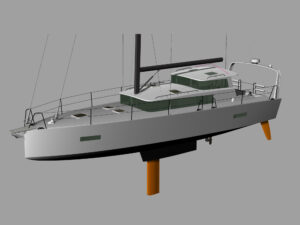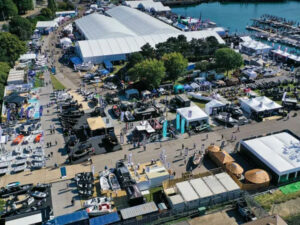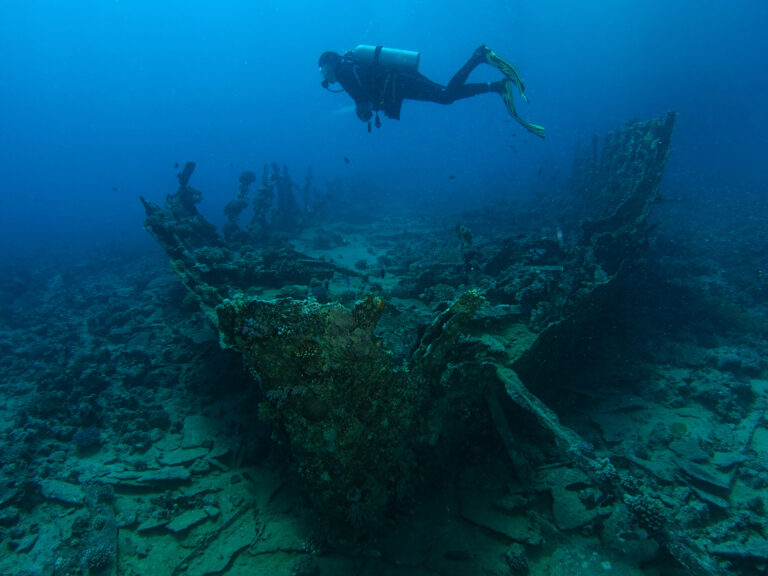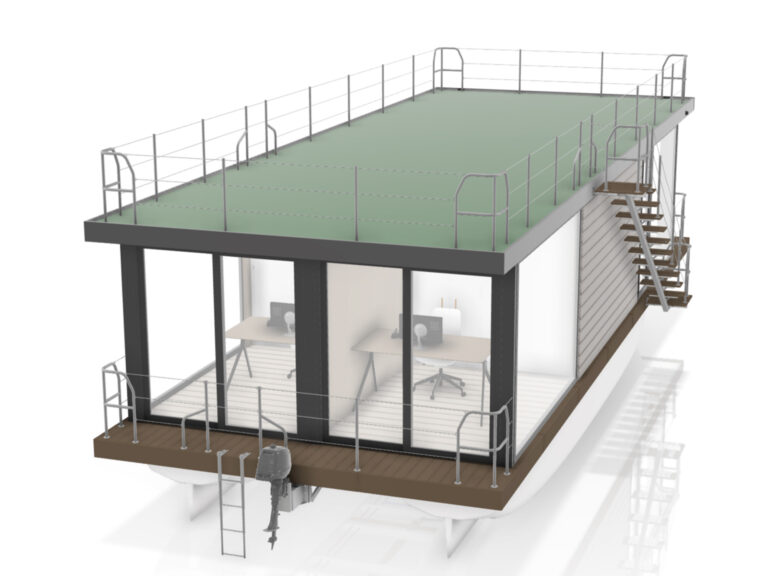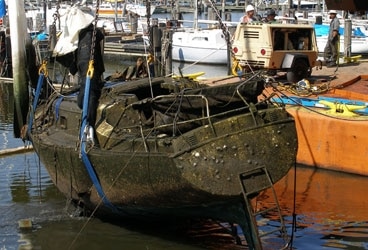
ASNewOrleans368
Wednesday night racing and weekend regattas started again in earnest this year on Louisiana’s Lake Pontchartrain. Every week, skippers and crew hopped onto their boats from the finger piers, iced down cold drinks, shared po’boys, and caught up on events and stories as they headed out to the course. It’s a time-honored tradition in New Orleans, but unfortunately, one thing hasn’t changed since last year’s regattas: the city’s publicly managed marinas remain in various states of ruin while only private marinas farther away from the city limits have completed, or nearly completed, repairs.
At the start of the summer, only a few months before the second anniversary of Hurricane Katrina, an estimated 125 boats were still lying foundered in one of New Orleans’ largest marinas, the 600-slip New Orleans Municipal Yacht Harbor. These boats–many with their bellies full of diesel and gasoline–were abandoned and left to rot in the brackish water by derelict owners and insurance companies. With more than 100 boathouses and their contents washed into the marina, along with about 600 large wooden dock boxes–one of which was stationed at each boat slip, each holding a stew of paints, solvents, oils, batteries, fiberglass, resin, and other untold chemicals–an environmental nightmare rapidly developed.
In May 2006, Ben Goliwas, a longtime Municipal Harbor liveaboard disgusted by the lack of action in cleaning up the marinas, organized members of the New Orleans and Southern Yacht Clubs, both located on the harbor, for debris removal on weekends. “You wouldn’t want any of that stuff down there in your living room,” Goliwas says. “We’ve been able to pull out hot-water heaters, refrigerators, parts of walls, and other unidentifiable large wooden things. We only touched the surface though. We’ve removed maybe 30,000 pounds of wreckage, but unfortunately that was nothing. Everything you can consider was in Municipal Harbor.”
While there are signs of recovery throughout the city, the marinas of New Orleans are a microcosm of the city as a whole. Small victories have come about through the hard work and determination of local businesses and citizens, particularly those like Goliwas, but not from government on any level. Goliwas’ and the yacht club members’ efforts to clean the marina was the only action toward that end until the government finally became involved 20 months after the storm hit.
Municipal Harbor is caught in one of the worst examples of an all too common catch-22 in the recovery process: By law, the federal government, through the Federal Emergency Management Agency, is required to restore all local government infrastructures to pre-storm levels, as it would anywhere a disaster takes place. However, FEMA demanded that Louisiana’s city and state governments match 10 percent of the costs before it contributed federal recovery funds. The problem is that nearly the entire city was destroyed, so even if New Orleans had an economy as healthy as other major American cities, it could never pony up enough funds. This dilemma has left the city in desperate straits, relying on the diminished tax base of still-recovering citizens and businesses to cover these bureaucratic reconstruction requirements.
Even more troublesome is the fact that the federal government has traditionally waived its 10-percent match policy major disasters, including 9/11 and Hurricane Andrew. It wasn’t until June 2007, 22 months after the storm, that Congress eliminated New Orleans’ local match. Nearly 250,000 people are still unable to return to their homes, not to mention damage to schools and police stations, so it could be awhile before marinas register on the city’s radar.
The New Orleans boating community always understood and expected that marinas were going to be low on the priority list for recovery and, as such, have learned to live with the continuing difficulties. In fact, these circumstances have helped bring this group closer than ever before, whether through shared hardship or, as some would joke, delirium.
Still, with the continued lack of utilities, the boating hazards, and the environmental issues, patience is wearing thin. In April 2007, nearly 100 boaters attended a meeting of the Municipal Harbor’s governing board and a revolt nearly ensued when a board member proposed closing the harbor and removing even the new and repaired boats from the marina. With functioning slips either non-existent or having multiple-year waiting lists, this was an impossible pill for slip holders to swallow. The motion failed to come up for a vote. When slip holders were allowed to speak on the record, their voices rose in unison. They stressed the importance of functioning marinas for recreation and, more importantly, small businesses.
Removal of the neglected boats in Municipal Harbor began in May 2007 with Resolve Marine Group of Port Everglades, Florida, winning the contract. The marina was cleared of debris and sunken boats by August. Tim McKinnis, Resolve’s salvage master, estimated that nearly 200 sunken boats were pulled from the water, a significantly higher number than the original estimate of 125. People can now walk the piers without having to climb over twisted metal and boats can sail out into the 633-square mile lake that offers much deserved respite from rebuilding homes, businesses, and lives.
The marina is still without utilities, however, and boaters are waiting on FEMA to approve funding for restoring services and repairs. Few locals expect complete utilities to return for some years to come.
The marine service, sales, and supply businesses, located adjacent to the marinas in New Orleans’ West End, have nearly all come back online. This is no small feat, considering the surrounding neighborhood of Lakeview was inundated by more than nine feet of water for more than a month when a federal levee failed nearby. West Marine has even reopened (doing so even before the return of the grocery story), becoming the first national retailer to return to the neighborhood.
While the battle is far from over, the boating community has survived. Regattas continue on the lake, and many owners have replaced lost boats with smaller, faster, trailerable boats. The area has seen a huge response from national sailing groups, including US Sailing, which brought symposiums and national championships to West End. The liveaboard community has grown out of necessity, and that returns the neighborhood flavor to the docks. The Southern YC is up and running–albeit in triple-wide trailers– after burning to the ground, and the New Orleans YC is nearly fully repaired. Despite hardships, both clubs’ memberships have remained level.
New Orleans and the Mississippi Gulf Coast still have a long beat ahead, but the community has shown that it has not only the will to stand up in the face of adversity, but also the perseverance to race to the finish. As one of Municipal Harbor’s board members put it, “Are we going to fence off the entire city of New Orleans to residents while we rebuild? Of course not. We’re going to rebuild our city from within and keep some semblance of our lives intact while we’re doing it. This marina has to stay open.”
For more information on the clean-up and operational status of the New Orleans Municipal Yacht Harbor Marina, visit its website (www.nomyh.com). South Shore Harbor Marina in New Orleans East and Orleans Marina in the West End share a website, www.marinasinneworleans.com. New Orleans Yacht Club (www.noyc.org) has a sizeable message-board following, and is a great way to find and disseminate information throughout the Gulf Coast.


